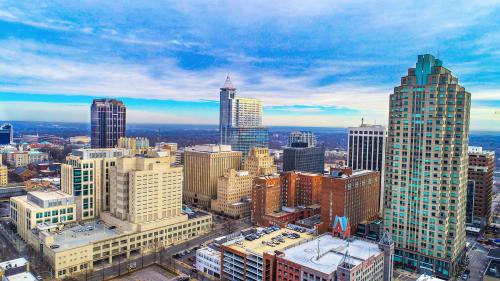Editor’s Note: The following piece originally was published in the Miami Herald.
The U.S. economy, while technically not in recession, remains fragile. The United States must create more and better jobs at all skill levels to recover from the Great Recession and ensure better opportunities for all Americans.
The solutions are not easy: the U.S. must transition from an economy focused inward and characterized by excessive consumption and debt to one globally engaged and driven by production and innovation. Cities and metropolitan areas can best drive these solutions; some are already on their way.
A recent visit to Miami as part of our joint project, the “Global Cities Initiative”, reinforces our strong belief that this metropolis is well-positioned to meet the post-recession challenge and prosper in a more globally engaged U.S. economy.
Greater Miami is the world in three counties. It has the largest foreign-born share of its population among the top 100 metros (38.8 percent) and remains at the vanguard of attracting and assimilating immigrants.
Miami welcomes the world’s travelers, millions each year. Nearly half of overnight visitors come from abroad — the highest rate in the country — and travel and tourism generates over 25 percent of the region’s exports.
Miami attracts the world’s investment. South Florida’s concentration of foreign banks afford foreign firms and families the dual benefit of access to Latin American markets and the certainty of the U.S. financial, regulatory, and monetary environment.
Miami moves the world’s goods. The region is the gateway for one-third of trade between the U.S. and Latin America. The trade and logistics industry produces over 14 percent of metropolitan GDP, the fourth highest of any region in America. International goods movement firms like LAN Cargo, whose fully automated cold storage facility we toured at Miami International Airport, keep the industry globally competitive.
Metros, like money, never sleep. Miami already faces stiff competition from metros like Houston and Atlanta to be the destination of Latin America’s goods, people and capital. And the real promise of this region — to benefit Florida and the nation — will not be realized unless Miami builds upon its unique assets and location to move up the economic value chain.
So, the stark question: can the Miami region do what it takes both to maintain and extend its unique global position?
There is reason to be optimistic. While Congress dithered on a transportation bill the past several years, the region and state’s leadership stepped up and made three transformative infrastructure investments to meet the opportunities of the widening of the Panama Canal. Each of these upgrades — the Bay Tunnel, the deep dredge project and the Intermodal Rail Reconstruction Project — represent a new breed of bottom-up 21st century infrastructure development and finance that leverages, but is not exclusively reliant on, federal support.
To prosper over the long haul, Miami now needs the same urgency and purpose to diversify and upgrade its regional economy:
- First, as the recent Beacon Council’s One Community One Goal report made clear, Miami cannot just be a place through which goods and people flow; it should also be a center for advanced production and services. Evolving from port to production, from tourism to technology, or from airport to aerospace will not just happen. Strategic steps must be taken on special trade zones, commercialization of innovation, career and technical services and local regulation.
- Second, Miami should use its global brand to engage international markets beyond Latin America, particularly in Asia. With offices in Beijing, Shanghai, Japan and Taiwan, Enterprise Florida has already made a head start as have the region’s universities. But forging stronger linkages with Asian metros across all business and civic sectors remains critical.
- Finally, in addition to continuing to look outward, Miami should re-engage with other parts of the United States. Manufacturing’s resurgence in America’s industrial core may warrant new bonds with markets like Cleveland, Detroit and Chicago on both freight movement and production.
Clearly, these aspirations will require hard choices about where to make local investments. Going forward, Greater Miami and the state should prioritize next economy-shaping investments like advanced research and development, skilled worker training, and sustainable urban development over subsidizing sprawl and stadiums. And as in other metros, the Miami region would benefit if its local governments collaborated, instead of competing against each other.
Smart investments will yield high return. Like Venice in the 15th century, location and migration have made Miami a metropolis especially built for a network of trading cities. Play the hand well and the region will prosper for decades to come.


Commentary
Seizing Miami’s “Global Moment”
July 15, 2012